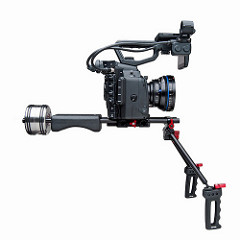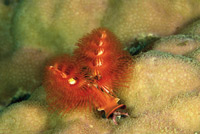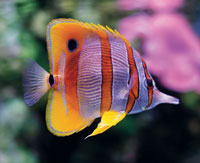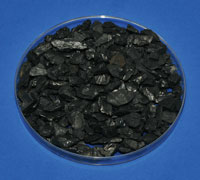Whatever the reason the need arose to move an aquarium, and the sump if there is one, it is an action aquarists would mostly prefer to avoid. Avoidance unfortunately is usually not an option.
Some aquarists take the opportunity to start again. They sell the aquarium system in entirety, and use the money obtained towards a new one. A good idea maybe, but the move still needs to take place. The advantage is the buyer usually collects and the buyer has the headache of putting it all back together again. Other aquarists will set up a new system in the desired location dry, and then move the contents of the old system directly to the new home, which does make things somewhat easier. Then the old system is sold.
The majority of aquarists are faced with the move and do not wish to sell their system. They sit head in hands and gaze at their beautiful reef, knowing that it is to be destroyed, or at least temporarily.
There will be some problems with the move, it is inevitable. There are two things that are going to assist the aquarist above all else - patience and planning.
If the aquarium is being moved because of a change of house, the date of move should be known. Giving plenty of time to plan before the big day, say two weeks, try and arrange with the occupant of the new house a date that the aquarium can be moved in advance of the furniture move. If this cannot be done, try and arrange a date with the new occupant of the current house a date after the move when the aquarium will go.
If the aquarium move is to a location within the same house, give say, two weeks planning time before moving it.
The first check for all aquariums but particularly with a large one, is to ensure that the floor in the new location is capable of supporting the aquarium. Seawater is heavy, about 10lbs per gallon, and then there are the rocks and sand plus the aquarium itself.
A list should be made:
Large containers
The aquarist should know the net gallonage of the system. There will need to be containers to contain as much of this seawater as possible. It is mature and a total fill of fresh raw mix should be avoided. The fish and other livestock can go in one or more of these containers if they are large enough.
Live rock
If the aquarium is a reef system, then it is probable that corals will be attached to the rocks. It is best to get these into large containers also so that the corals are not overly stressed.
System set-up
It may be a while since the system was put together. A drawing of what attaches to where, and how, can be of great help in re-assembly.
Load size
It will be more than stressful if the amount that needs to be carried is excessive to that possible. Calculate as near as can be the size of vehicle needed. Of course, more than one journey could be made if this is practical.
Help
This may well be the aquarist’s cry in due course, but at this moment consider who can be asked to assist in carrying heavy items, such as containers, aquarium, sump etc.
Course of action
There has to be a commonsense train of actions. Obviously the aquarium cannot be moved until it has been emptied of rock and much of the seawater.
Before the aquarium is even looked at, and having decided on the number of seawater containers that can be used, estimate the amount of newly mixed seawater that will be needed to top up the aquarium at the new location. Have a container for this, plus the salt, and mix it a day before the move so that it is ready and waiting.
1. Switch off and remove the lighting system (beware of any hot bulbs).
2. Remove seawater from the aquarium until the level is near the top of the reef. This seawater goes into the waiting containers, but do not fill them fully.
3. With great care (corals), remove rocks from the reef and place them carefully in containers so that the corals face minimum damage. Try and put base rocks in one container and face rocks with corals in another.
4. When as much of the reef has been moved as possible, the fish (and shrimps if any) need to be moved. These have been left until the rocks were out of the way. Catching fish etc with a reef or partial reef present is very difficult. Patience will certainly be needed for this event, the fish are likely to escape the net many times. It is recommended to use two nets. Get them into a container as quickly as possible ready for transportation.
5. Remove as much of the remaining seawater as possible, so that as much as possible can be transported to the new location in the containers. Seawater does not cool very rapidly, but on a journey of any length insulation may be a requirement. When removing seawater remember to switch off heaters, and not remove them from the water when hot. Discard seawater that cannot be transported, do not leave it in the aquarium in a large amount as the extra weight when the aquarium is moved may cause overstress and put the aquarium integrity in doubt.
6. Now is the time for the �hired muscle’ to really help. Move the nearly empty aquarium (having disconnected pipework etc) to the transport. Also any sump. Caution is required as these may well be glass.
7. Avoid stressing them and put them in the transport on a supportive base such as a thick foam sheet.
8. Put remaining items of equipment in the transport.
On arrival at the new location go into reverse. Put the display aquarium into position first, and put as much seawater from the containers in without exposing the corals to air. As the seawater rises place the rockwork in, add more water, then more rockwork etc. Keep below any overflows. Try and get all the rockwork in and covered in seawater. The rocks can be placed where the aquarist thinks they go, but do not spend too much time, this can be adjusted later. Use some of the pre-mixed seawater to bring the level up if necessary. Put the circulating pumps in the display aquarium and also the heaters. Turn them on. Now the fish etc can go back in, attempt to stress them the least possible.
At this point take a breather. The aquarium has heaters, circulation and filtration.
Connect up the sump (if used) referring to the pre-prepared diagram as necessary. All other equipment can be connected, protein skimmers, return pumps etc. When this is all done, add the pre-prepared seawater to bring everything to the correct level. If there is too much pre-prepared seawater, it will do for the next routine water change, if too little, provided it is not that short, the system will not suffer until another batch is ready. Turn on all remaining equipment apart from the lights. Only one action remains, and that is to check for leaks.
The lights can be fixed in place the next day. It is recommended that the lights remain off for at least one full day after the move, this should help with the stress the fish (and corals) have suffered.
A check can be made that all equipment is functioning correctly and seawater levels are as they should be.
The above is a skeleton guideline to moving an aquarium. An aquarist may wonder �but what about the’?’ This is why pre-planning is so important.
All things being equal, after a while, when the livestock have settled and the reef rocks have been adjusted, the aquarist will once more have time to gaze at a wonderful display.

 Catch More Salmon - Follow These Simple To Implement Techniques
FLAT Rigs outriggers, shock cord snubber, and rigging kit i
Catch More Salmon - Follow These Simple To Implement Techniques
FLAT Rigs outriggers, shock cord snubber, and rigging kit i
 Aiptasia
Q. I have Aiptasia all over my aquarium and have been
Aiptasia
Q. I have Aiptasia all over my aquarium and have been
 Pufferfish Teeth Care
Because their teeth are constantly growing, pufferfish
Pufferfish Teeth Care
Because their teeth are constantly growing, pufferfish
 Aiptasia Anemone
Aiptasia Anemone
 Aquarium Carbon
Whether it is for a small betta bowl, 6 million gallons
Aquarium Carbon
Whether it is for a small betta bowl, 6 million gallons